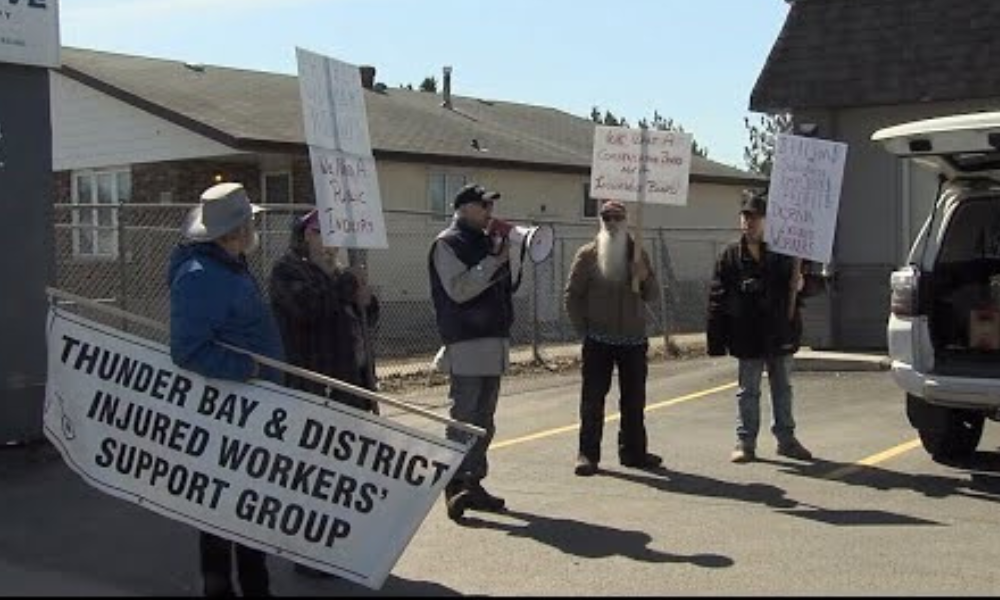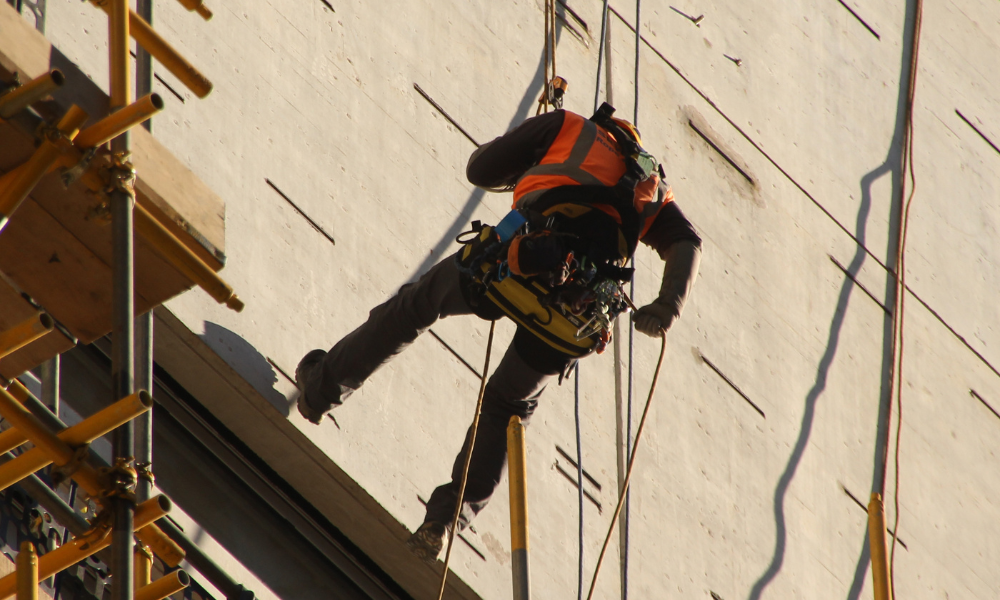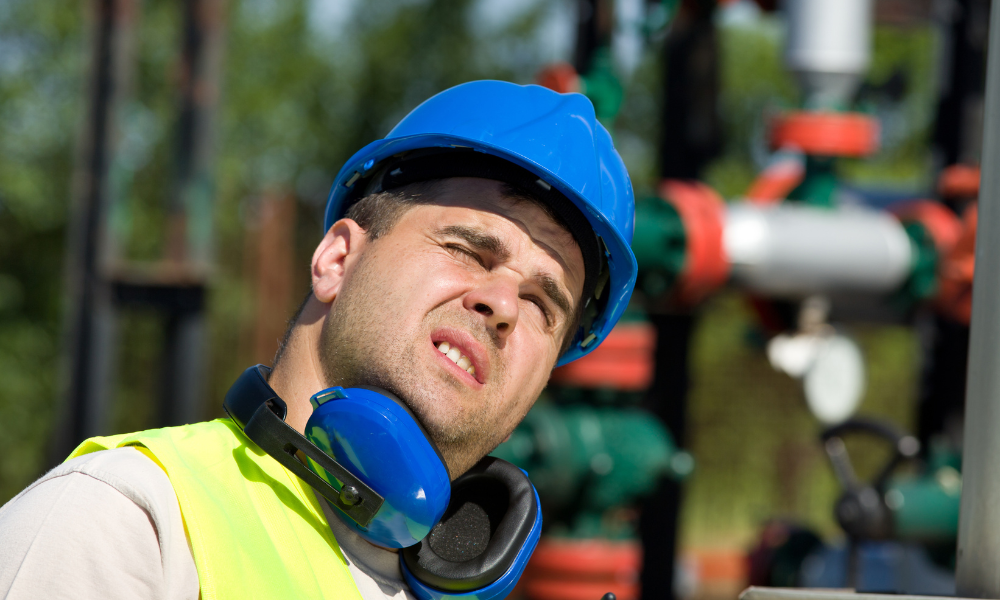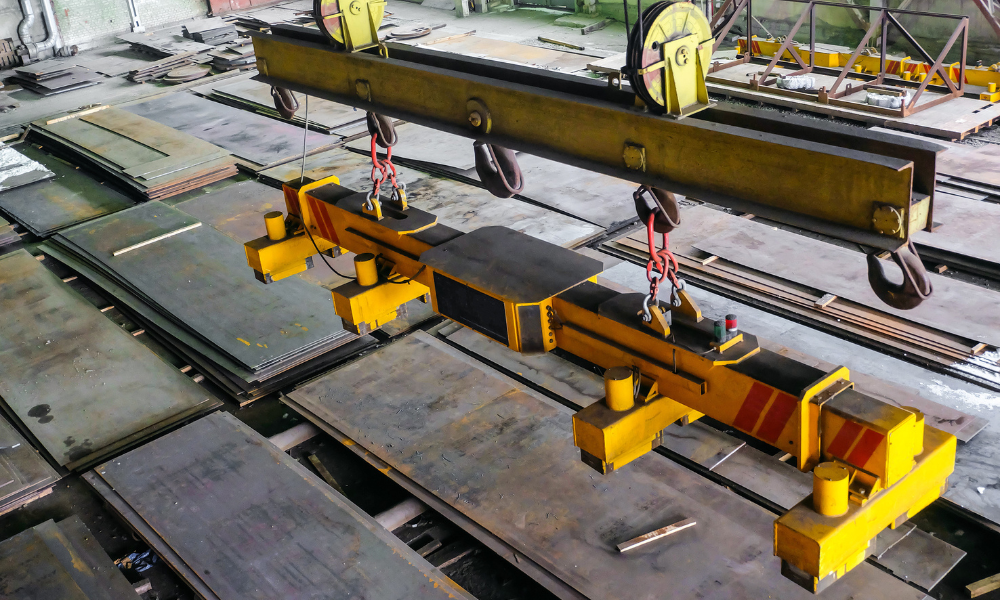In 2004, owners of a waste dump at a former mine in Kimberley, B.C., began work to redesign the site in preparation for re-vegetation and erosion control. As a result of the work, which included extending the toe of the dump closer to a water sampling shed and covering a drainage ditch, oxygen-depleted effluent began flowing into a water collection sump under the shed, and air in the shed became directly connected to hazardous air in the dump.
Two years later, in May 2006, four people, including two ambulance paramedics, were killed by lack of oxygen when they entered the shed. A 2011 report on the Sullivan Mine accident concluded the redesign work, which had, in effect, created a confined space in the shed, contributed to the accident.
“It was a failure to recognize it was a confined space, so the precautions weren’t taken,” says Peter Gilmour, owner of Nanaimo, B.C.-based Advanced OHS Solutions.
Confined spaces can be found in most workplaces, yet the task of recognizing any particular work space as a confined space can be difficult.
How is a confined space defined?
The CSA Z1006 Management of Work in Confined Spaces standard, published in 2010, provides a comprehensive national guideline for determining what is considered a confined space.
The standard defines a confined space as a work space that:
• ?is fully or partially enclosed
• ?is not designed or intended for continuous human occupancy
• has limited or restricted access or egress, or an internal configuration that can complicate first aid, evacuation, rescue or other emergency response services.
Federal legislation on confined spaces, which governs industries that operate interprovincially such as pipelines, railways and grain companies, uses the same definition as the CSA standard, saying a confined space is also one that “may become hazardous to any person entering it.”
New Brunswick OHS legislation lists four characteristics of confined spaces, says Jesse Martell, OHS consultant and professor at the University of New Brunswick in Fredericton. In addition to the three criteria of the CSA definition, it says the space “is or may become hazardous to anyone entering because of its design, construction, location, atmosphere, materials or substances therein, work performed therein or other conditions.”
British Columbia’s OHS regulation includes the three criteria of the CSA definition, too, but also requires the space be “large enough and so configured that a worker could enter to perform assigned work.”
In Ontario, a confined space is a fully or partially enclosed space that is both not designed for human occupancy and one “in which atmospheric hazards may occur because of its construction, location or contents or because of work that is done in it.”
Some confined spaces are commonly recognized. These include silos, vats, hoppers, utility vaults, tanks, sewers, pipes, access shafts, truck or rail tank cars, aircraft wings, boilers, manholes, manure pits and storage bins.
Other kinds of confined spaces, however, are more difficult to identify.
“Spaces like sump pumps and barges that might be obvious to a qualified person are missed by someone not familiar with confined space,” says Gilmour.
Pits, trenches and ditches conform to the definition of a confined space when access or egress is limited, but they are often overlooked. According to the Ontario Ministry of Labour, these work sites can also be dangerous when there is a potential for a hazardous atmosphere or, if improperly maintained, may be subject to collapse, which can lead to engulfment and entrapment.
A frac water pond may also be a confined space for the divers who are entering to do repairs and surveying, but it’s up to the employer to determine that, according to Budd Phillips, regional prevention manager at WorkSafeBC.
“It depends upon the risks and the hazards and rather than coming to us and saying ‘Tell us if it’s a confined space,’ we’re going to say to you ‘You tell us. You go back, you do the proper assessment and you come back to us with the proper procedures to follow,’” he says.
Is that really a confined space?
Erin Bishop, training co-ordinator at Vaughan, Ont.-based Safetyscope, says she starts her analysis of possible confined space work sites by considering the configuration and size of the entrance. Confined space openings, often hatches or manholes, are usually small. However, the opening of a confined space can also be wide, like that of an open pit.
“You must ask yourself ‘If something happens when I’m in here, how do I get out?’ If you have to work to get in or out — you have to climb or crawl — then chances are you’re looking at a confined space,” she says.
Next, Bishop considers the purpose a space is designed for. To determine whether a space is intended for continued human occupancy, it’s often useful to refer to provincial building codes. Offices and classrooms, for example, have features — proper doorways, lighting and ventilation — that indicate they’re designed for humans to inhabit for long periods of time.
“Something that’s not designed for human occupancy does not meet the requirements of the building code,” she says.
To assess if the space could become hazardous to a worker, consider the atmospheric hazards. The primary atmospheric danger in confined spaces is oxygen deficiency or enrichment, says Wesley Sim, technical safety instructor at Hazmasters in Burnaby, B.C. The permissible oxygen range is 19.5 per cent to 23 per cent. Sim, however, advises his students not to enter a space unless the oxygen level is at 20.9 per cent.
Sim says three processes commonly consume oxygen in confined spaces:
• ?microbial action caused by organics
• ?hot work (burning processes require oxygen; plus, leakage of shielding gas from a welding hose can displace oxygen)
• ?oxidation, a problem affecting barges and underground pipes and ladders.
Another atmospheric hazard is flammable gases, vapours and dusts, Sim says. The concentration of these substances should be kept to less than 10 per cent of their lower explosive limit (LEL). The atmosphere should also be monitored for toxic air contaminants.
After assessing for ease of entry, human occupancy and hazards, occupational health and safety professionals should be able to determine if the work space is a confined space, in accordance with applicable provincial or federal legislation.
Do I need a permit?
According to CSA Z1006, whether an entry permit is required before a person enters a space is based on a prior identification of the area as a confined space and, if it is, on a risk assessment. If certain measures, including atmospheric monitoring, lockout or ventilation, are required for a person to enter the space, then a permit is necessary.
When a permit system is in place and followed correctly, people are forced to do a number of things to verify and check off that they have followed proper procedures, says Wayne Donnelly, vice-chair of the CSA Z1006 committee, who is based in Winnipeg.
“You ensure the space is safe before you enter and it remains safe the entire time the space is occupied, until the time the person leaves,” he says.
In addition to serving as a review of the precautions needed for safe entry, entry permits reduce the likelihood of unauthorized workers gaining access to confined spaces, Martell says.
Using a permit system also creates a written record of the steps taken to comply with the requirements of confined spaces regulations. An employer who doesn’t use an entry permit to restrict access to confined spaces may be guilty of criminal negligence under Bill C-45. This is especially true in jurisdictions where permits are required but is also possible in provinces where the OHS regulations don’t mandate the use of entry permits, says Martell.
Entry permits aren’t specifically required by New Brunswick OHS regulations but are recommended and deemed a best practice in industry, he says.
In Ontario, an entry permit is required every time a worker enters a confined space. A permit is required for each location and a new permit is required for each day (or shift) the work continues.
In B.C., permits are required when the space has been assessed as having a high atmospheric hazard; it requires lockout or isolation procedures (where piping that is attached to the confined space and contains a hazardous substance must be disconnected, blanked or blinded or locked out); or there is a hazard of entrapment or engulfment.
The failure to identify confined spaces can take a heavy toll. Accidents in confined spaces tend to be serious, often fatal, so it is always better to err on the side of safety, Sim says.
“In a confined space, the game is different. It’s not like working in a shop,” he says. “If something goes sideways, you’re not getting out of there in a hurry.”
Linda Johnson is a freelance writer based in Toronto. She can be reached at [email protected].
Two years later, in May 2006, four people, including two ambulance paramedics, were killed by lack of oxygen when they entered the shed. A 2011 report on the Sullivan Mine accident concluded the redesign work, which had, in effect, created a confined space in the shed, contributed to the accident.
“It was a failure to recognize it was a confined space, so the precautions weren’t taken,” says Peter Gilmour, owner of Nanaimo, B.C.-based Advanced OHS Solutions.
Confined spaces can be found in most workplaces, yet the task of recognizing any particular work space as a confined space can be difficult.
How is a confined space defined?
The CSA Z1006 Management of Work in Confined Spaces standard, published in 2010, provides a comprehensive national guideline for determining what is considered a confined space.
The standard defines a confined space as a work space that:
• ?is fully or partially enclosed
• ?is not designed or intended for continuous human occupancy
• has limited or restricted access or egress, or an internal configuration that can complicate first aid, evacuation, rescue or other emergency response services.
Federal legislation on confined spaces, which governs industries that operate interprovincially such as pipelines, railways and grain companies, uses the same definition as the CSA standard, saying a confined space is also one that “may become hazardous to any person entering it.”
New Brunswick OHS legislation lists four characteristics of confined spaces, says Jesse Martell, OHS consultant and professor at the University of New Brunswick in Fredericton. In addition to the three criteria of the CSA definition, it says the space “is or may become hazardous to anyone entering because of its design, construction, location, atmosphere, materials or substances therein, work performed therein or other conditions.”
British Columbia’s OHS regulation includes the three criteria of the CSA definition, too, but also requires the space be “large enough and so configured that a worker could enter to perform assigned work.”
In Ontario, a confined space is a fully or partially enclosed space that is both not designed for human occupancy and one “in which atmospheric hazards may occur because of its construction, location or contents or because of work that is done in it.”
Some confined spaces are commonly recognized. These include silos, vats, hoppers, utility vaults, tanks, sewers, pipes, access shafts, truck or rail tank cars, aircraft wings, boilers, manholes, manure pits and storage bins.
Other kinds of confined spaces, however, are more difficult to identify.
“Spaces like sump pumps and barges that might be obvious to a qualified person are missed by someone not familiar with confined space,” says Gilmour.
Pits, trenches and ditches conform to the definition of a confined space when access or egress is limited, but they are often overlooked. According to the Ontario Ministry of Labour, these work sites can also be dangerous when there is a potential for a hazardous atmosphere or, if improperly maintained, may be subject to collapse, which can lead to engulfment and entrapment.
A frac water pond may also be a confined space for the divers who are entering to do repairs and surveying, but it’s up to the employer to determine that, according to Budd Phillips, regional prevention manager at WorkSafeBC.
“It depends upon the risks and the hazards and rather than coming to us and saying ‘Tell us if it’s a confined space,’ we’re going to say to you ‘You tell us. You go back, you do the proper assessment and you come back to us with the proper procedures to follow,’” he says.
Is that really a confined space?
Erin Bishop, training co-ordinator at Vaughan, Ont.-based Safetyscope, says she starts her analysis of possible confined space work sites by considering the configuration and size of the entrance. Confined space openings, often hatches or manholes, are usually small. However, the opening of a confined space can also be wide, like that of an open pit.
“You must ask yourself ‘If something happens when I’m in here, how do I get out?’ If you have to work to get in or out — you have to climb or crawl — then chances are you’re looking at a confined space,” she says.
Next, Bishop considers the purpose a space is designed for. To determine whether a space is intended for continued human occupancy, it’s often useful to refer to provincial building codes. Offices and classrooms, for example, have features — proper doorways, lighting and ventilation — that indicate they’re designed for humans to inhabit for long periods of time.
“Something that’s not designed for human occupancy does not meet the requirements of the building code,” she says.
To assess if the space could become hazardous to a worker, consider the atmospheric hazards. The primary atmospheric danger in confined spaces is oxygen deficiency or enrichment, says Wesley Sim, technical safety instructor at Hazmasters in Burnaby, B.C. The permissible oxygen range is 19.5 per cent to 23 per cent. Sim, however, advises his students not to enter a space unless the oxygen level is at 20.9 per cent.
Sim says three processes commonly consume oxygen in confined spaces:
• ?microbial action caused by organics
• ?hot work (burning processes require oxygen; plus, leakage of shielding gas from a welding hose can displace oxygen)
• ?oxidation, a problem affecting barges and underground pipes and ladders.
Another atmospheric hazard is flammable gases, vapours and dusts, Sim says. The concentration of these substances should be kept to less than 10 per cent of their lower explosive limit (LEL). The atmosphere should also be monitored for toxic air contaminants.
After assessing for ease of entry, human occupancy and hazards, occupational health and safety professionals should be able to determine if the work space is a confined space, in accordance with applicable provincial or federal legislation.
Do I need a permit?
According to CSA Z1006, whether an entry permit is required before a person enters a space is based on a prior identification of the area as a confined space and, if it is, on a risk assessment. If certain measures, including atmospheric monitoring, lockout or ventilation, are required for a person to enter the space, then a permit is necessary.
When a permit system is in place and followed correctly, people are forced to do a number of things to verify and check off that they have followed proper procedures, says Wayne Donnelly, vice-chair of the CSA Z1006 committee, who is based in Winnipeg.
“You ensure the space is safe before you enter and it remains safe the entire time the space is occupied, until the time the person leaves,” he says.
In addition to serving as a review of the precautions needed for safe entry, entry permits reduce the likelihood of unauthorized workers gaining access to confined spaces, Martell says.
Using a permit system also creates a written record of the steps taken to comply with the requirements of confined spaces regulations. An employer who doesn’t use an entry permit to restrict access to confined spaces may be guilty of criminal negligence under Bill C-45. This is especially true in jurisdictions where permits are required but is also possible in provinces where the OHS regulations don’t mandate the use of entry permits, says Martell.
Entry permits aren’t specifically required by New Brunswick OHS regulations but are recommended and deemed a best practice in industry, he says.
In Ontario, an entry permit is required every time a worker enters a confined space. A permit is required for each location and a new permit is required for each day (or shift) the work continues.
In B.C., permits are required when the space has been assessed as having a high atmospheric hazard; it requires lockout or isolation procedures (where piping that is attached to the confined space and contains a hazardous substance must be disconnected, blanked or blinded or locked out); or there is a hazard of entrapment or engulfment.
The failure to identify confined spaces can take a heavy toll. Accidents in confined spaces tend to be serious, often fatal, so it is always better to err on the side of safety, Sim says.
“In a confined space, the game is different. It’s not like working in a shop,” he says. “If something goes sideways, you’re not getting out of there in a hurry.”
Linda Johnson is a freelance writer based in Toronto. She can be reached at [email protected].





